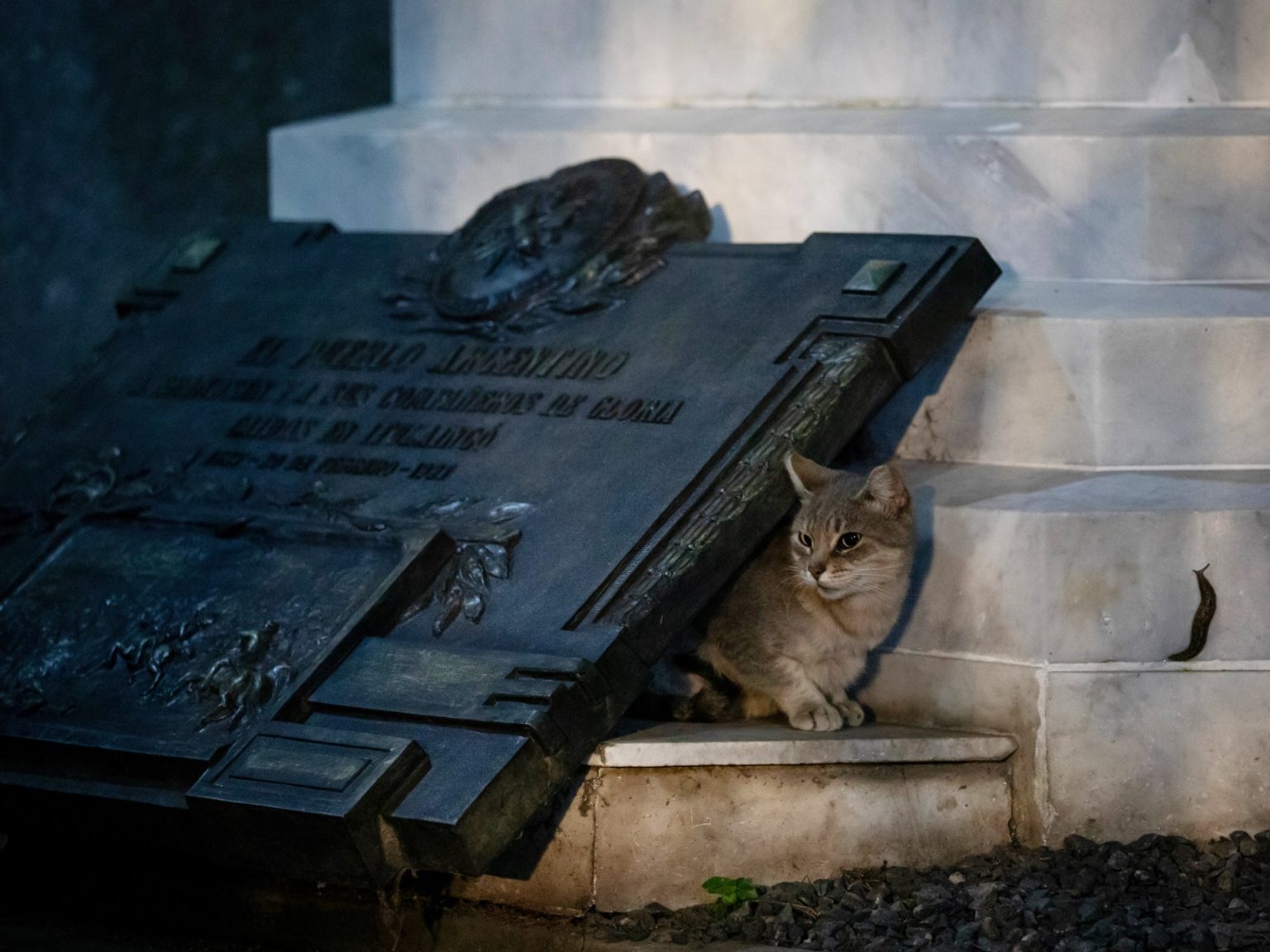In the bustling metropolis of Buenos Aires, the Recoleta Cemetery stands out as a well-known tourist attraction, featuring a maze of Art Nouveau and neo-Gothic marble mausoleums along with the tomb of former first lady Eva Peron and a colony of cats that have captivated visitors for decades. The cemetery, known for its architectural extravagance and connection to the country’s elite, has been home to a population of stray cats that have added a touch of whimsy to the site. Tour guides like Sergio Capurso have seen many visitors fall in love with these feline residents over the years.
However, in recent years, the population of cats at Recoleta Cemetery has dwindled significantly due to a contentious adoption drive aimed at providing the cats with indoor homes and increasing their lifespan. While some see this as a sign of progress for the welfare of the animals, others lament the loss of a beloved part of the cemetery’s mystique. Guide Robert Wright, who led tours at Recoleta, acknowledges the emotional attachment people had to the cats but emphasizes the importance of ensuring their well-being.
The remaining cats at Recoleta Cemetery face challenges such as lack of shade, exposure to harmful sun rays, and dangers of falling into underground crypts. Despite these risks, caretaker Marcelo Pisani dedicates his life to looking after the remaining cats, ensuring they are fed and cared for every day. The dwindling cat population has sparked debates about the treatment of stray animals in urban environments and the role of local communities in their welfare.
The history of the Recoleta cats reflects broader issues of animal control in Latin American cities, where municipal authorities often play a minimal role in addressing the population of stray animals. The cats’ fate has been intertwined with the generosity of locals like Pisani and efforts by advocates like Alejandro Aranda Rickert, who have worked to find the cats indoor homes and improve their quality of life. The story of Recoleta Cemetery and its feline residents sheds light on the complexities of balancing the charm of urban fauna with the reality of animal welfare.
As the Recoleta cats face a dwindling population and future without feline companions, the challenges of managing stray animal populations in cities like Buenos Aires remain. With concerns about rising inflation and fewer pet owners able to afford caring for their animals, the issue of stray animals is likely to persist. Private citizens and caretakers like Pisani continue to play a crucial role in caring for abandoned animals and ensuring their well-being, even as the last cats of Recoleta Cemetery face an uncertain future.
The story of the Recoleta cats serves as a poignant reminder of the complexities of urban wildlife management and the importance of community involvement in animal welfare. Despite the challenges faced by stray animals in urban environments, the efforts of caretakers and advocates reflect a commitment to improving the lives of these animals and finding them safe and loving homes. As the last cats of Recoleta Cemetery face an uncertain future, their legacy as beloved residents of a historic site will endure in the hearts of those who cherished their presence.


